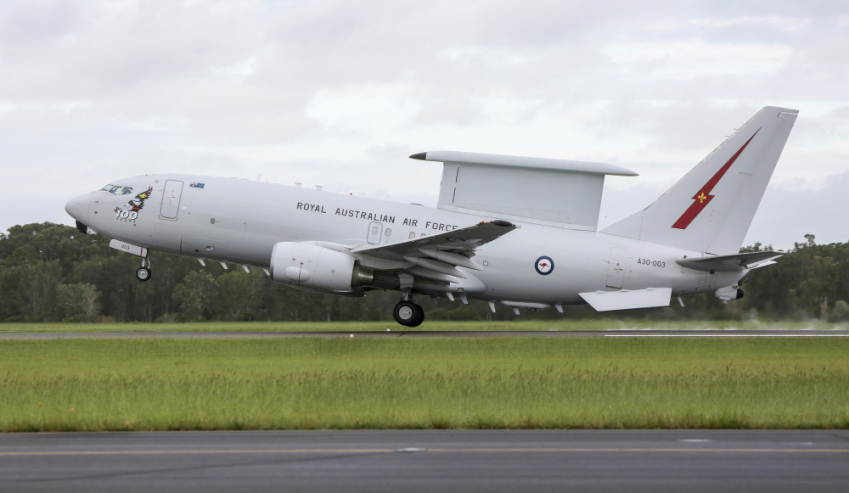The UK has confirmed that it was in discussion with Boeing and the Royal Australian Air Force about the potential for the E-7 Wedgetail Airborne Early Warning and Control (AEW&C) aircraft to replace its current E-3 Sentry fleet.
Minister for Defence Christopher Pyne and Minister for Defence Industry Steve Ciobo welcomed the announcement and said it would further deepen Australia’s relationship with the UK and was an endorsement of a crucial part of Australia’s air combat capability.
"The Wedgetail is a great Australian success story, designed for the Royal Australian Air Force with investment by the Australian government and significant contribution by Australian industry, it is a highly advanced world-best aircraft," Minister Pyne explained.
Australia’s experience in operating the Wedgetail presents a significant opportunity to work closely with the UK through co-operative development and industry collaboration.
Minister Ciobo said, "A UK procurement will add to the global fleet of Wedgetails, already including Australia, Turkey and South Korea, which can be supported and sustained by Australian industry and create hundreds of Australian jobs. Australian industry, including the more than 200 Australian companies that have contributed to our own Wedgetail acquisition and sustainment, stands to benefit from what could become one of Australia’s most significant defence exports."
This announcement follows the third Australia-United Kingdom Defence Industry Dialogue (AUKDID), held in London in July, with Minister Pyne explaining, "During the dialogue I took the opportunity to further promote Australia’s world-class Wedgetail capability to the United Kingdom’s Secretary of State for Defence and the then Minister for Defence Procurement."
Defence Secretary Gavin Williamson, said "Our future with Australia will already see us operate the same maritime patrol aircraft, world-class Type 26 warships and supersonic F-35 jets. Wedgetail may join that formidable armoury and help us work together to take on the global threats that we both face."
In a release, the UK Ministry of Defence (MOD) highlighted proven interoperability and capbility delivered by the E-7A Wedgetail, with the release stating: "It is a proven and reliable aircraft that has been in-Service with the Royal Australian Air Force for some time, with potential to considerably reduce the risk normally associated with acquiring a complex new platform of this nature. The aircraft is based on the Boeing 737 airliner family as is the P-8A Poseidon maritime patrol aircraft due to enter service in 2019."
Additionally, the MOD stated, "With its proven interoperability, the Wedgetail could also link up with the RAF’s latest arrival, the F-35 Lightning, providing pilots with the latest intelligence and situational awareness demonstrating how a modernised next generation Air Force. With Australia also a partner in the F-35 programme, the RAF and the Royal Australian Air Force will have further opportunities to work together across platforms and with other allies such as the United States to share and collect data and conduct joint training missions, all leading to faster, more effective and more integrated combat forces."
The Boeing 737 AEW&C is a state-of-the-art system providing powerful airborne surveillance, communications and battle management.
The 737 AEW&C system encompasses both the Boeing 737-700 aircraft platform and a variety of aircraft control and advanced radar systems. Consisting of components created by Boeing and Northrop Grumman, the 737 AEW&C represents the standard for future airborne early warning systems. The E-7A Wedgetail AEW&C functions include:
- A steerable beam, L-band, electronically scanned array that provides optimal performance in range, tracking and accuracy;
- Radar that can track airborne and maritime targets simultaneously;
- Assistance to the mission crew in directing the control of high-performance fighter aircraft while continuously scanning the operational area;
- A "top hat" portion that provides a practical solution for fore and aft coverage while maintaining the low drag profile of the dorsal array system – enabling the MESA system to be installed on the mid-size 737-700 platform without significant impact to aircraft performance;
- An integrated identification friend or foe (IFF) function that shares the primary radar arrays to reduce weight, improve reliability, and simplify target correlation; and
- Advanced open-system architecture with standards-based design for cost-effective integration and add-on flexibility.
This announcement comes a week after Boeing consolidated $1.5 billion worth of contracts to support and enhance the capability delivered by the RAAF's E-7A Wedgetails.
Based at RAAF Base Williamtown, the six E-7A Wedgetails significantly improve the effectiveness of the ADF. They are capable of communicating with other aircraft and providing air control from the sky, and can cover 4 million square kilometres during a single 10-hour mission.









